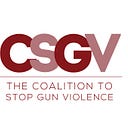My daughter was shot at Virginia Tech. Eleven years later, change is happening.
Most people don’t remember how many times their phone rang on a given day eleven years later. But I do. I still remember the incessant ringing on April 16, 2007. I remember ignoring it. And I remember, when my phone rang for the fifth time, looking at the area code: 540. Blacksburg, Virginia — where my daughter was in college at Virginia Tech.
Something was wrong. I needed to answer. Immediately, I recognized her voice on the other end of the line. “Hi, Mommy. I’ve been shot.”
Through the blur and the chaos that followed, my family was lucky. My daughter survived the injuries she sustained during the Virginia Tech massacre. Thirty-two others did not. At the time, Virginia Tech was our country’s worst nightmare — it was the deadliest mass shooting we had ever seen. We didn’t know how to process it. Our leaders didn’t know how to talk about it. Reporters didn’t know how to report on it — the shooter’s name and face were everywhere, which we now know does not adhere to best practices. Professors, students, and administrators were utterly heartbroken and shocked.
As a parent, I didn’t know how to support a child who had survived such horrific violence. I didn’t know how to help her deal with PTSD and flashbacks and a loss of security. And I definitely didn’t know how to help ensure that other loved ones didn’t have to experience what Virginia Tech families endured. Eleven years ago, it felt as though there was no roadmap, no blueprint for how to rebuild and move forward, no guiding light.
We moved forward anyway, doing the best we could. I linked up with families who felt a similar sense of outrage and pain, and we became the newest advocates in the gun violence prevention movement. I began working to change gun laws in Virginia and at the federal level, working with grassroots advocates and learning more about gun violence in all its forms — including day-to-day gun violence and gun suicide. Though I didn’t realize it at the time, I was working alongside survivors and advocates to write the guidebook I’d wanted in the months following the Virginia Tech massacre.
We pressed on. We developed and advocated for evidence-based policies to identify dangerous people. We worked to bring people from all walks of life into the movement. We educated gun owners and non-gun owners about policies that could save lives. We began to unmask the National Rifle Association (NRA) for the extremist organization it is and show members that the organization no longer represents them. We supported those running for office who embraced gun violence prevention and worked to defeat those who didn’t.
Gradually, survivors of gun violence — from survivors of mass shootings to survivors of shootings that never made headlines — fine-tuned this guidebook for moving forward and creating change. And as we’ve seen in recent months, the strategies and policies we’ve collectively developed are working.
Following the February 14 shooting in Parkland, Florida, we have seen a marked surge in activism and a subsequent change in our politics. We have seen former pro-NRA politicians begin to advocate for stronger gun laws. We have seen commonsense, evidence-based policies like extreme risk laws pass in several states since the Parkland shooting. We have even seen federal legislators support moderate gestures on gun violence prevention policies, like banning bump stocks and improving the background check system.
Perhaps most importantly, we have seen student activists — from Marjory Stoneman Douglas High School and schools across the country — bring renewed energy to a growing movement. They are drawing attention to day-to-day gun violence in communities of color. They are continuing to unmask the NRA and politicians who do their bidding. They are adding their own chapters to the guidebook, and we are all better for it.
In less than two years, Virginia Tech has gone from the deadliest mass shooting in American history to the third deadliest — surpassed by the Pulse massacre in 2016, then the Las Vegas massacre in 2017. The shootings seem never-ending, and for every individual killed or injured by gun violence, the trauma has a ripple effect: parents, siblings, spouses, friends, and family become part of the survivor network — a club no one wants to join.
It’s devastating to have to welcome people into this club. It is horrible to relive the trauma each time another mass shooting occurs, each time you meet someone whose loved one has been killed with a gun. You simultaneously welcome them with open arms and wish you weren’t meeting them at all.
Though the gun violence prevention movement has grown as a result of such tragedy and unspeakable loss, there is camaraderie and strength among those who have been touched by gun violence. And as the survivor network has grown and become more involved in gun violence prevention advocacy, we have become more powerful and purposeful in our advocacy. We have learned how to use pain and turn it into action.
The change we are witnessing is a testament to the guidebook that survivors and gun violence prevention advocates have created together over many years — before Virginia Tech and after. Today, on the eleventh anniversary of the Virginia Tech massacre, that guidebook is our way forward. It is the light.
Lori Haas is the Virginia state director at the Coalition to Stop Gun Violence.
